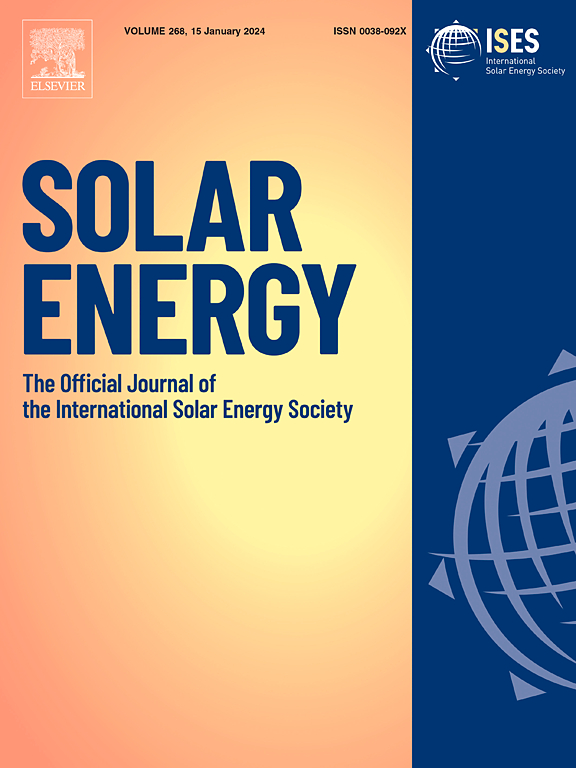An analytical model for predicting photovoltaic module key voltage parameters incorporating the temperature difference between the module and ambient
IF 6
2区 工程技术
Q2 ENERGY & FUELS
引用次数: 0
Abstract
Compared to controlled laboratory conditions, the electrical performance of photovoltaic (PV) modules under real operating conditions is influenced by the nonlinear effects of dynamic environmental factors. Improving voltage parameter accuracy, especially Maximum Power Point Voltage (Vmp), is crucial for efficient Maximum Power Point Tracking (MPPT) and overall system performance. Traditional models that rely solely on module temperature and irradiance fail to adequately capture outdoor climate variations. This paper proposes an analytical Model for predicting voltage parameters based on the temperature difference between the module and ambient(ΔT), considering their interaction. First, the strong nonlinear correlation between ΔT and voltage parameters was determined using correlation analysis methods such as the Maximal Information Coefficient (MIC). Then, ΔT was quantified and integrated into the traditional conversion formula. Finally, the formula coefficients were identified using the levenberg–marquardt (L-M) method with limited historical data. The proposed model was validated using data from nine PV module groups with six technologies under various climates from two public datasets. Results show that incorporating the ΔT formula improves prediction accuracy and environmental adaptability of traditional model. The RMSE for Open Circuit Voltage (Voc) decreased by 0.1050 to 0.6389 V and for Vmp by 0.1004 to 1.2484 V, with the reduction in error being more especially significant under high-temperature conditions above 40 ℃. The identified coefficients show good stability and consistency. Furthermore, predictions for the same PV modules deployed under different climate conditions validated the model’s good generalization ability.
考虑组件与环境温差的光伏组件关键电压参数预测分析模型
与实验室控制条件相比,光伏组件在实际运行条件下的电性能受到动态环境因素非线性效应的影响。提高电压参数的精度,特别是最大功率点电压(Vmp)的精度,对于最大功率点跟踪(MPPT)的效率和系统的整体性能至关重要。仅依靠模块温度和辐照度的传统模型无法充分捕捉室外气候变化。本文提出了一种基于模块与环境(ΔT)之间温差的分析模型,考虑它们之间的相互作用来预测电压参数。首先,利用最大信息系数(MIC)等相关分析方法确定ΔT与电压参数之间的强非线性相关性;然后,将ΔT量化并整合到传统的换算公式中。最后,利用有限历史数据的levenberg-marquardt (L-M)方法确定公式系数。所提出的模型使用来自两个公共数据集的不同气候条件下具有六种技术的九个光伏组件组的数据进行了验证。结果表明,ΔT公式的引入提高了传统模型的预测精度和环境适应性。开路电压(Voc)的RMSE降低了0.1050至0.6389 V, Vmp的RMSE降低了0.1004至1.2484 V,在40℃以上的高温条件下,误差降低尤为显著。所识别的系数具有良好的稳定性和一致性。此外,对不同气候条件下部署的相同光伏组件的预测验证了该模型良好的泛化能力。
本文章由计算机程序翻译,如有差异,请以英文原文为准。
求助全文
约1分钟内获得全文
求助全文
来源期刊

Solar Energy
工程技术-能源与燃料
CiteScore
13.90
自引率
9.00%
发文量
0
审稿时长
47 days
期刊介绍:
Solar Energy welcomes manuscripts presenting information not previously published in journals on any aspect of solar energy research, development, application, measurement or policy. The term "solar energy" in this context includes the indirect uses such as wind energy and biomass
 求助内容:
求助内容: 应助结果提醒方式:
应助结果提醒方式:


